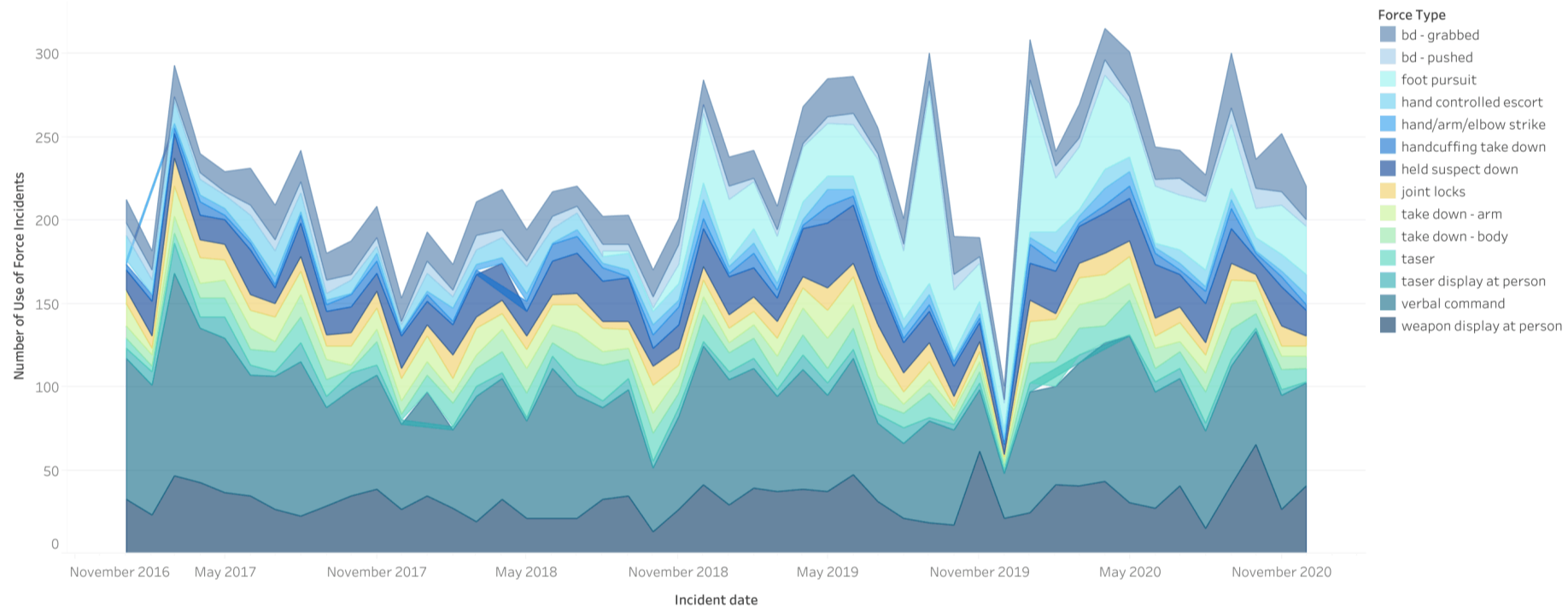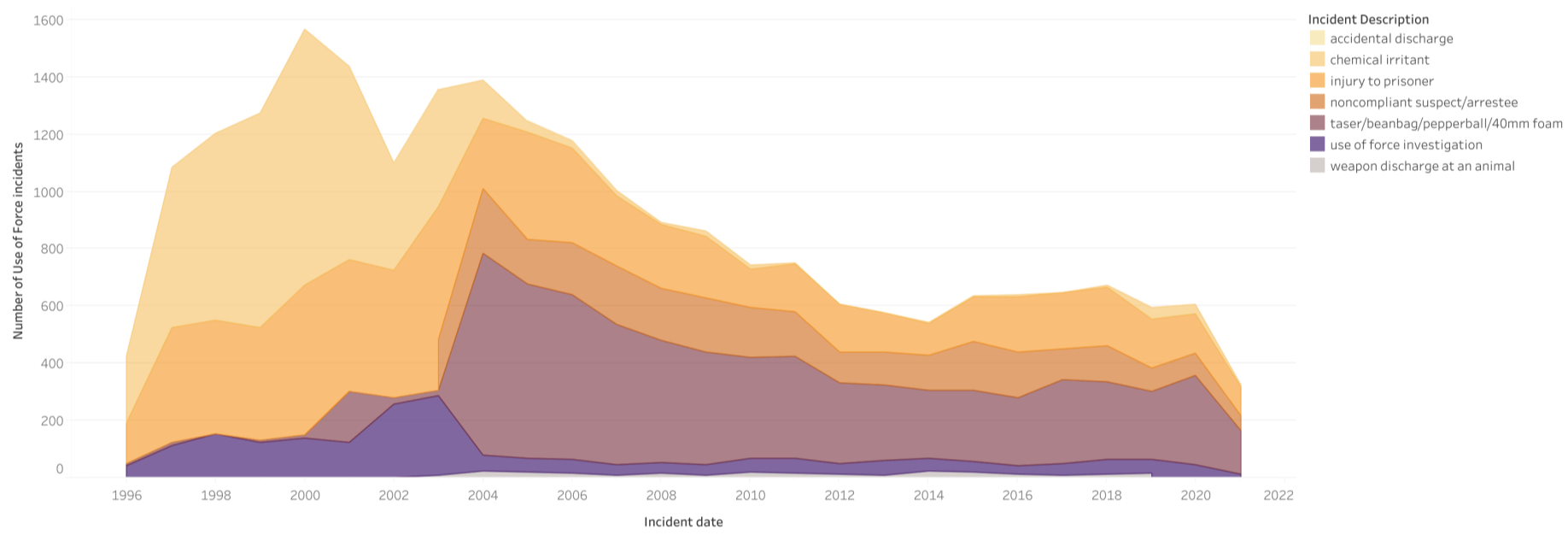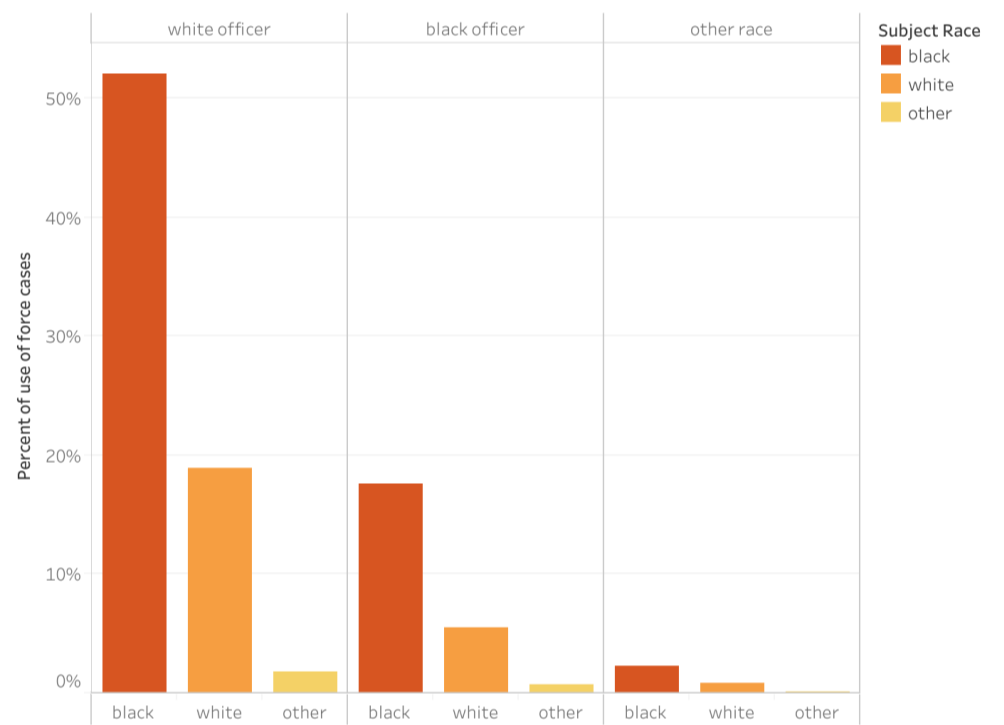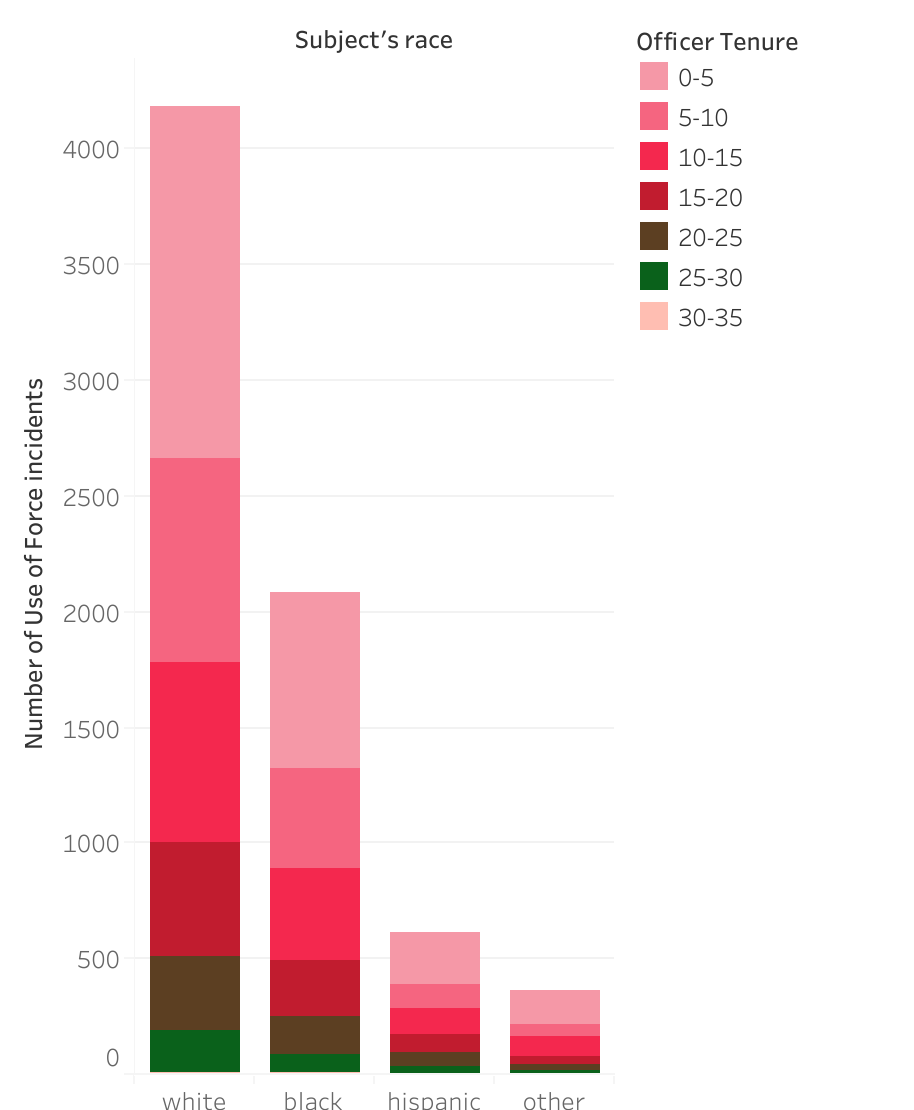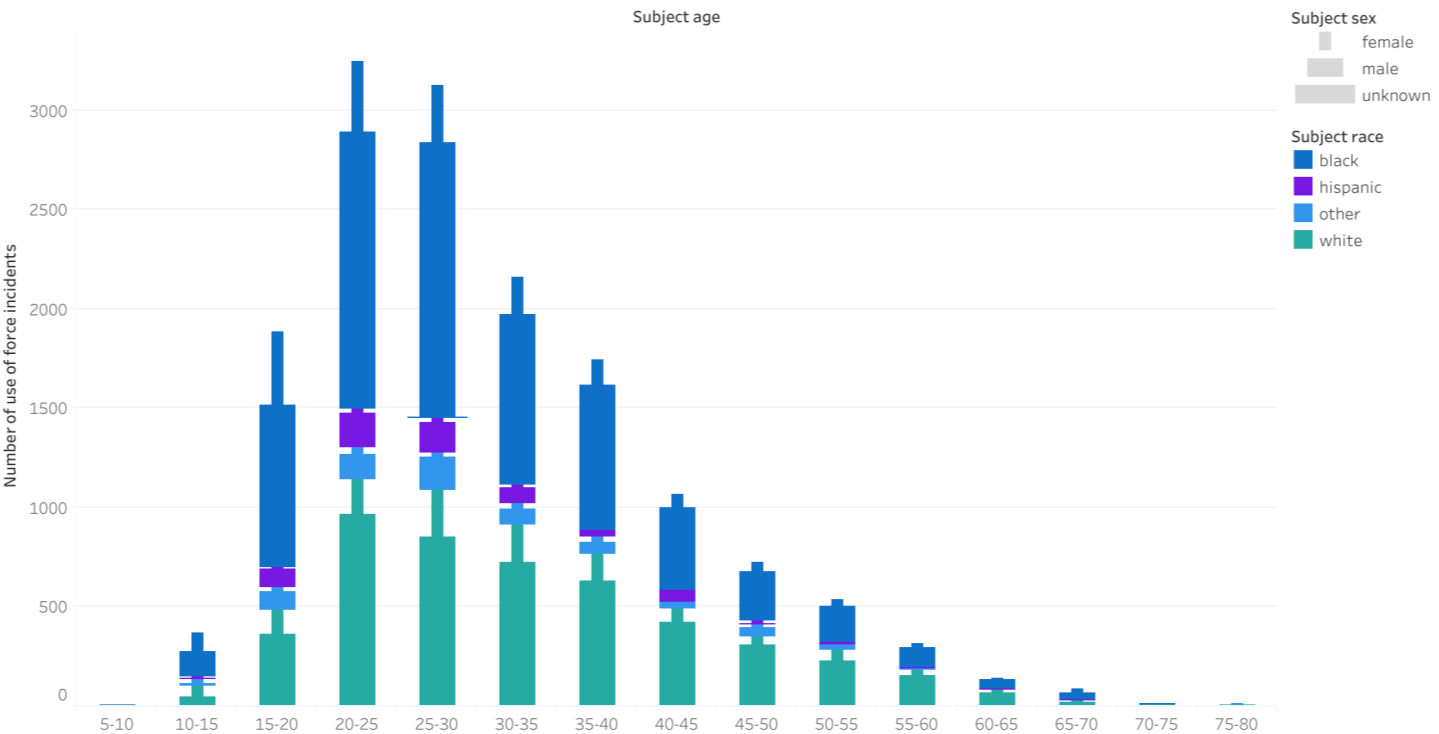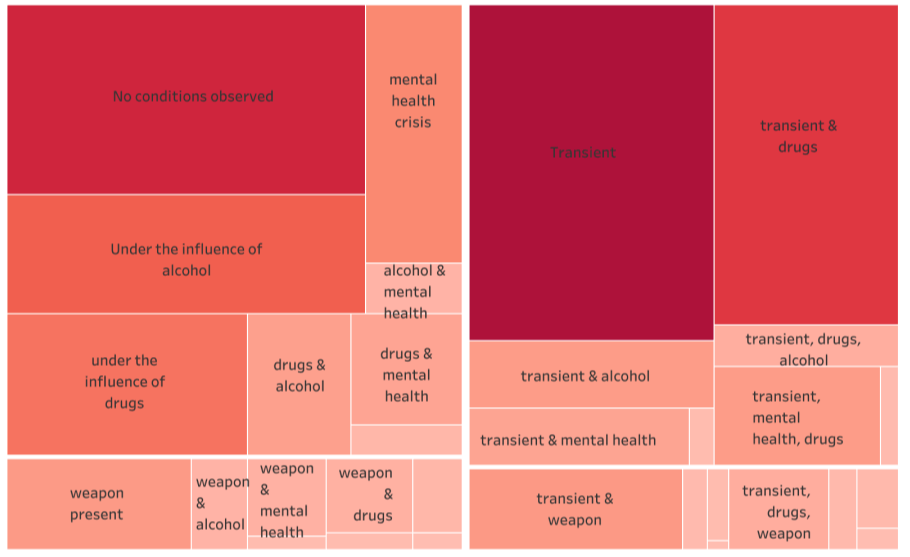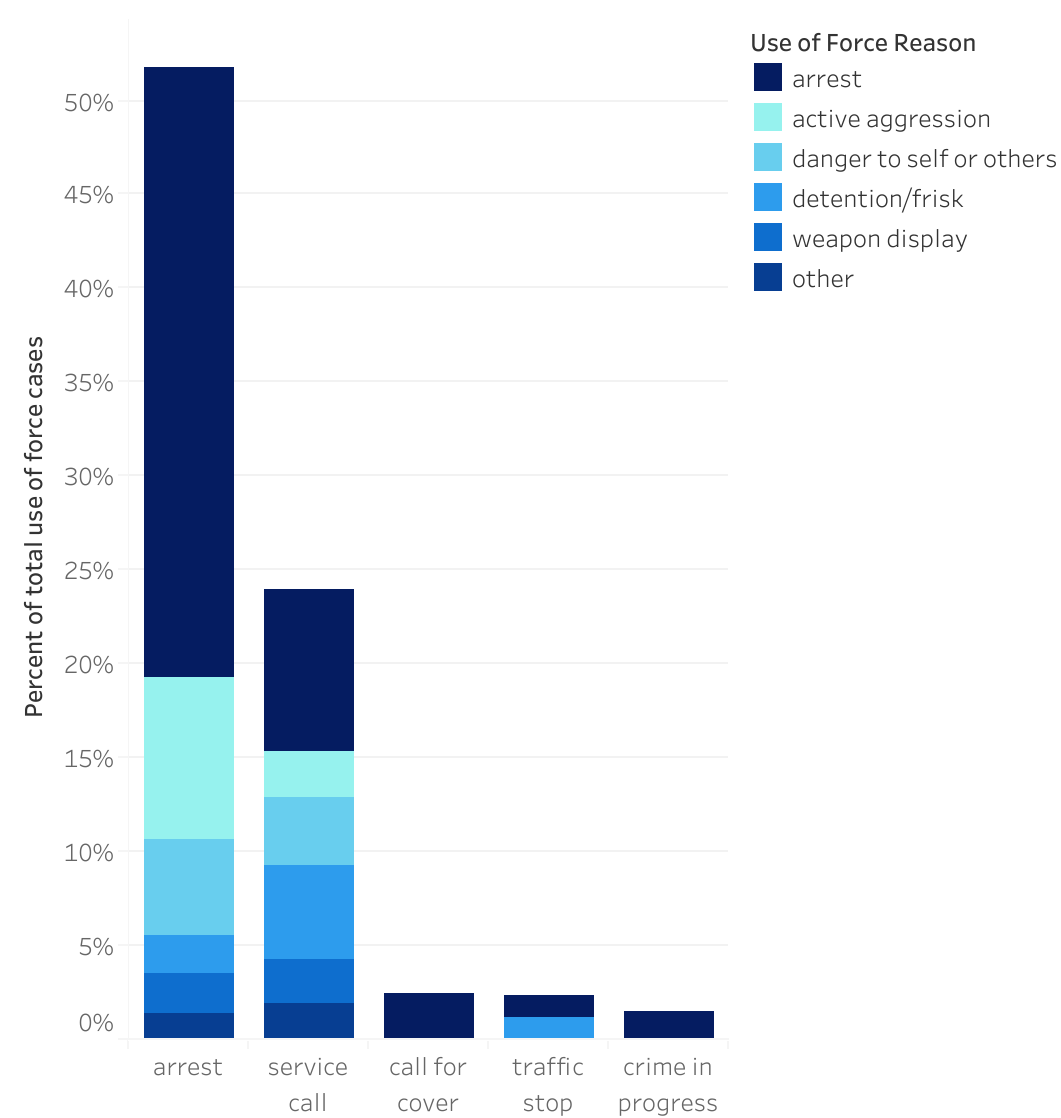Police Data Initiative datasets are inconsistent (part 1)
The amount and type of information collected about the officers and subjects involved in use of force cases varies widely across the datasets available on the Police Data Initiative website. Some datasets include the age, race, and gender of the subject and officer while others have detailed demographic information for just the subject. In the datasets that have both officer and subject details, we can observe startling disparities like the one at left: in Cincinnati over 50% of the use of force cases involved a black subject and a white officer. In Portland, OR, we can't tell whether there is a similar disparity in officer race, because they don't collect that information. On the other hand, Portland provides data on the officer's tenure, where many other cities do not, showing that newer cops are more often involved in use of force. Indianapolis, IN collects the most subject demographics; race, sex, and age. Black men between the ages of 20-30 make up the largest group of subjects of use of force in that city. The lack of comparable information across datasets makes it difficult to compare use of force across cities or to identify trends common to all data.

